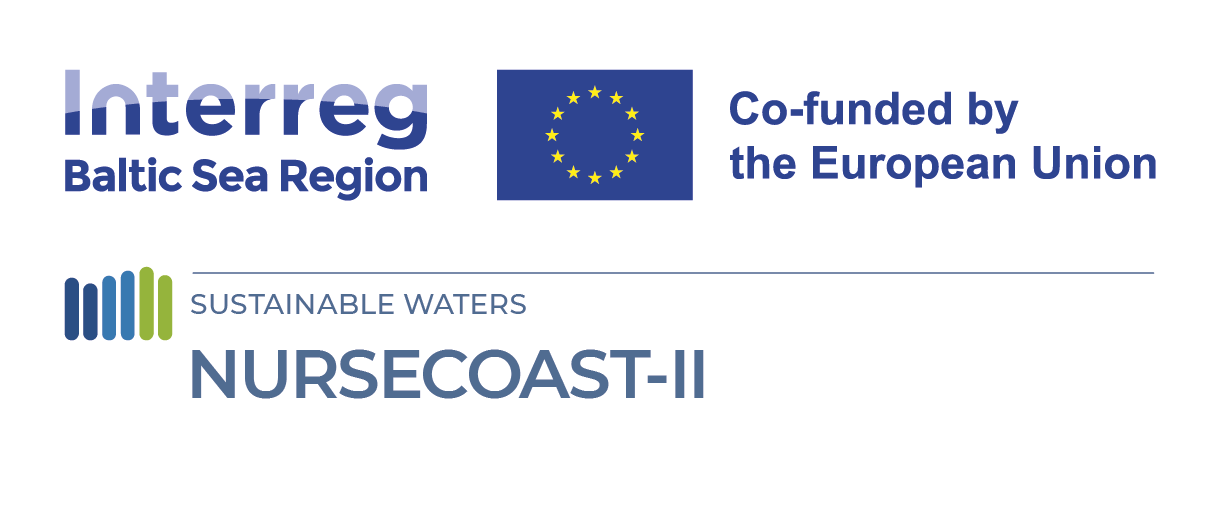NURSECOAST-II
Wastewater discharged from the near-coast Baltic tourist regions is characterised by a large variability of flow due to seasonality. This means significantly bigger wastewater flow during the peak of tourist season compared to the rest of the year. The wastewater plants are often designed according to low season and prepared to accommodate wastewater of significantly fewer people compared to actual needs during the peak tourist times, e.g. treatment plants with less than 2000-person equivalent capacity. Finding a different wastewater technological solution especially adapted to tourist areas, would reduce the nutrients inputs to the sea and improve the status of the Baltic Sea.
The project´s overarching goal is to find an alternative wastewater treatment solution specifically adapted to tourist areas that will reduce nutrient inputs to the Baltic Sea. It is recognised that the challenge of adaptation to high seasonality requires a broader approach than just technological solutions. Therefore, the project aims to provide a comprehensive method to address this issue.
The project's novel approach involves piloting different approaches to treat excess wastewater during the peak tourism period, such as wastewater treatment technologies, treated wastewater reuse, using nature to treat excess wastewater in the summer, greywater and sludge management, replication, and reintroduction. During the project, six pilots will be held in Denmark, Poland, Lithuania and Finland, testing better wastewater solutions.
In addition, three regional surveys on small wastewater systems will be conducted (in Sweden, Estonia, Latvia) to improve knowledge of everyday operation problems, compile several tutorials based on the project´s results, and formulate policy guidelines for wastewater treatment at the Baltic Sea region´s tourist destinations. This is accompanied with a pan-Baltic Sea Region GIS-based mapping. The project also includes practical study visits, knowledge and experience exchange, peer-review as well as environmental assessments and business incentives.
NURSECOAST-II connects 17 partner organisations from 8 countries in the Baltic Sea Region. Thus, the project demonstrates the potential for a high macro-regional impact, with a regional focus, as the solutions differ depending on the coast's characteristics, e.g. for the sandy coasts of Poland, Germany, Lithuania compared to the rocky archipelagos of Sweden, Finland and, Estonia.
The project's primary beneficiaries are local public authorities, tourist operators, companies, and infrastructure and public service providers.
EUCC-D is responsible for stakeholder engagement, information provision and exchange, and communication of project results.
NURSECOAST-II is funded by the Interreg Baltic Sea Region Program 2021-2027 and co-financed by the European Union.
Duration: 2023-2025
Funded by: Interreg Baltic Sea Region 2021-2027
Website: interreg-baltic.eu/project/nursecoast-II

RESULTS
Project work has been ongoing since January 2023, results of the project work are continuously updated on this page.
Information material:
Newsletter articles: